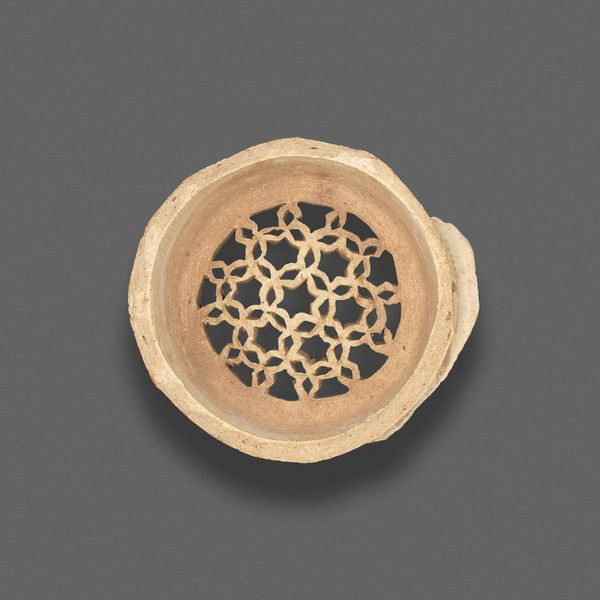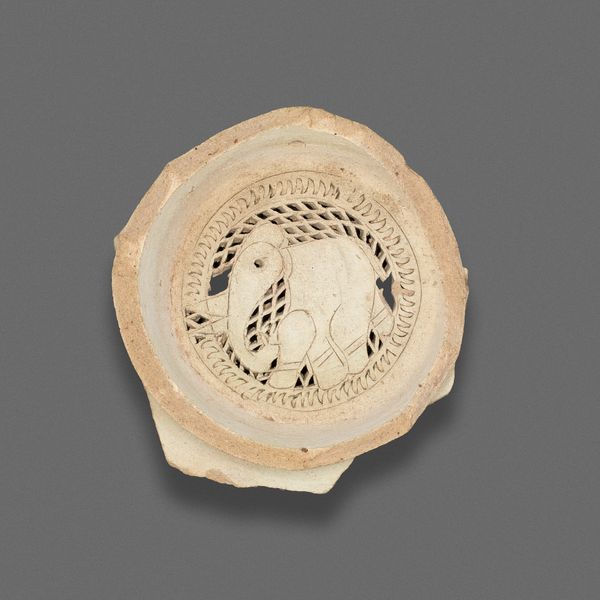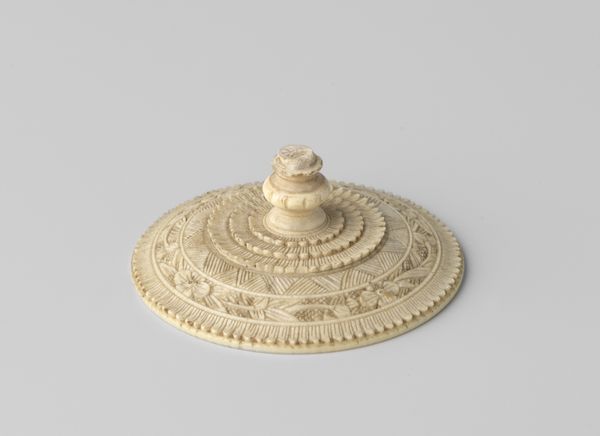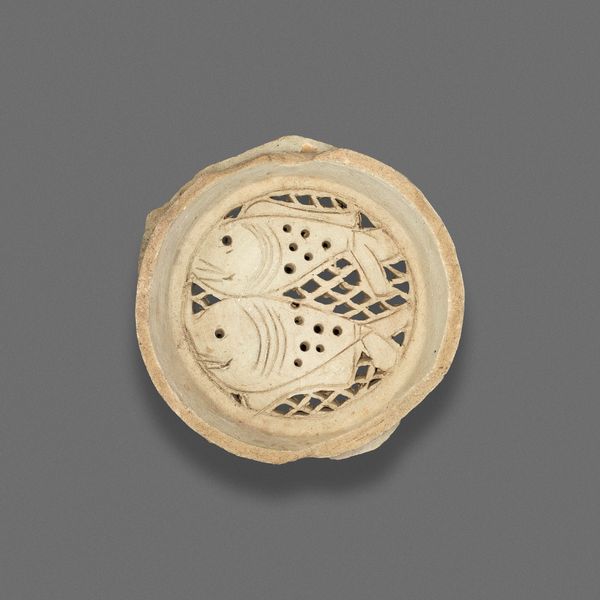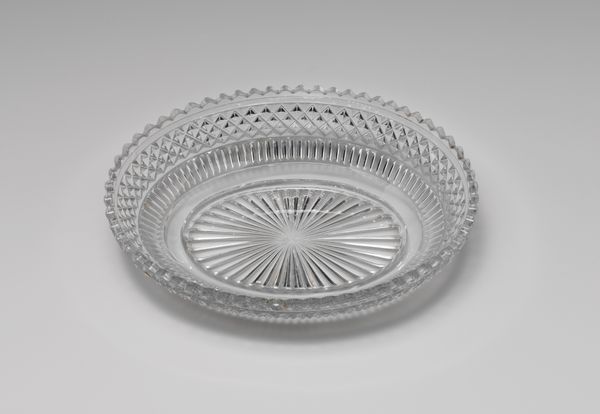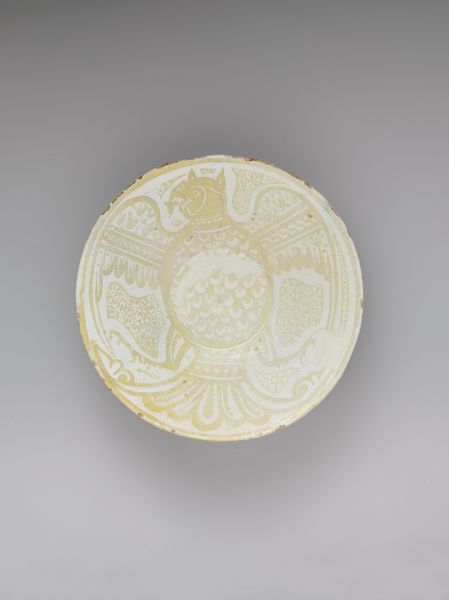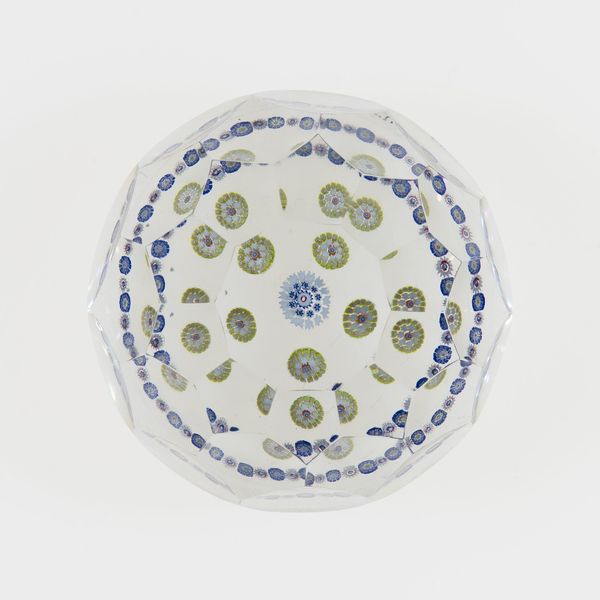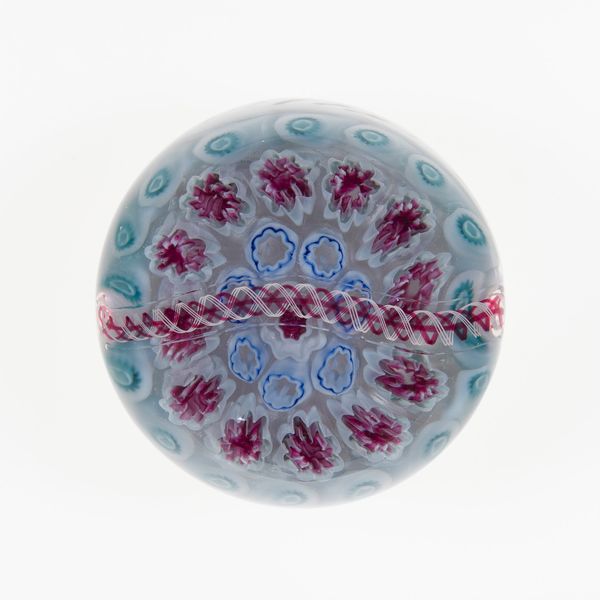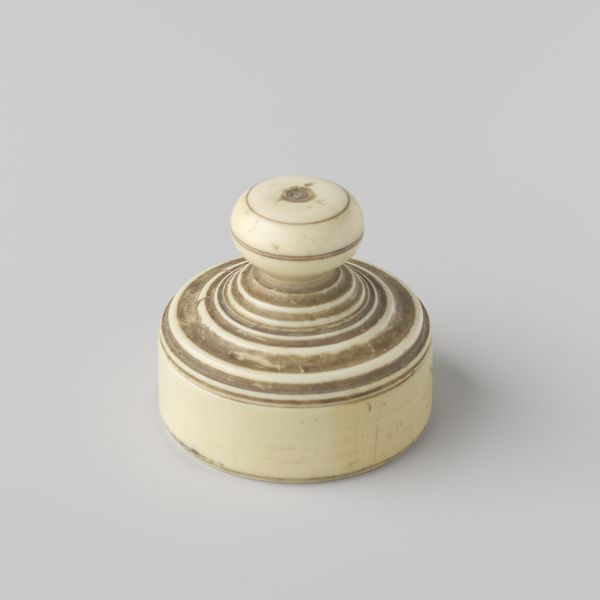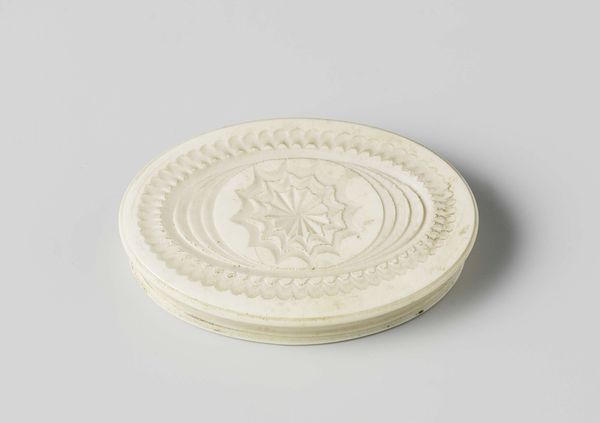
Clay Filter with punched and inscribed decoration Fatimid dynasty (969–1171), 11th–12th century
0:00
0:00
ceramic
#
pattern
#
asian-art
#
ceramic
#
geometric
#
islamic-art
#
decorative-art
Dimensions: 2.5 × 7.3 cm (1 × 2 7/8 in.)
Copyright: Public Domain
Curator: Looking at this clay filter from the Fatimid dynasty, 11th-12th century, held at the Art Institute of Chicago… Editor: It’s incredible to think this fragile ceramic piece was once a functional object. What strikes me most is the level of intricate, almost lace-like detail achieved through what appears to be a repetitive punching technique. What can you tell me about it? Curator: Precisely. It compels us to consider the labor invested. Think of the artisan, repeatedly impressing those patterns onto the clay. Is it 'high art' or craft? The repetitive, almost meditative, action of production is something often overlooked when we view historical objects, isn't it? What was the role of the craftsman in society at that time? Editor: Absolutely. It makes me wonder about the social status of the person making this. Did the act of production grant them prestige, or was it just another form of labor? Curator: That's the crux of it. Were these artisans recognized and celebrated for their skill, or were they simply cogs in a larger economic wheel? Consider also the material – humble clay transformed through skilled labour into something of apparent beauty. Did the use of that functional ceramic shift it's status to precious object because of that skilled manipulation? Editor: That makes me wonder how these skills were passed down. Thinking about the apprenticeship programs that might have existed then sheds light on the economy and how value was transferred. Curator: Indeed. Looking closer at this, the deliberate use of geometric designs hints at a broader cultural language. And its fragility implies an almost precious handling that is incongruous with function. We tend to glorify consumption, but understanding the production and disposal process adds so much more. Editor: This has definitely changed how I view not just Islamic art, but also decorative arts in general. I now see objects as embodiments of a whole network of human and material interactions. Curator: Agreed. Recognizing art's intrinsic relationship with its means of creation fosters a more comprehensive understanding.
Comments
No comments
Be the first to comment and join the conversation on the ultimate creative platform.
